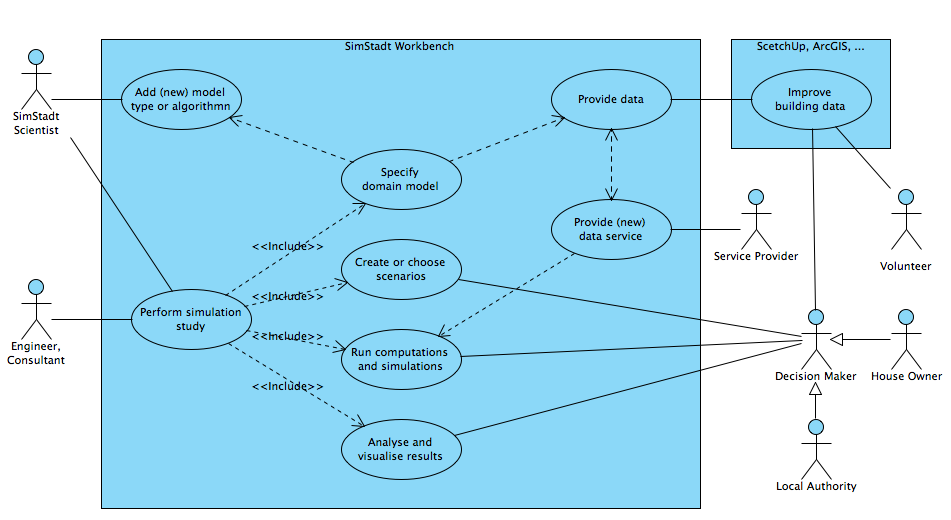System scope and context
From SIMSTADT
This diagram is a very high level use case diagram of the SimStadt software. The purpose of this diagram is to model, from a bird's eye view, the system boundaries, the actors using the system, and the things actors can do with it.
A good overview of the meaning of diagram elements can be found here: http://msdn.microsoft.com/en-us/library/vstudio/dd409427.aspx
Explanations:
- Rectangles depict systems. Note that the SimStadt software currently is modeled as one system (not two or three). This system is provisionally dubbed "Workbench", but could also emerge as some completely different kind of software.
- Our system will probably have to cooperate with third-party systems like ScetchUp or ArcGIS.
- If we consider novaFactory, Stanet and INSEL as a subcomponents of the workbench or a external systems, from the user's point of view, is open to debate.
- Each oval depicts a use case, that is a series of interactions performed by one or more actors in order to reach a particular goal.
- A use case can include (or call) other use cases. Note that a simulation study is performed by:
- specifying a domain model
- creating or choosing a scenario
- running computations and simulations
- and analyzing and visualizing the results.
- Solid arrows depict which actors take part at which use cases. Thus, the above diagram states, that only scientists and domain experts, but not decision makers, will specify domain models. However, decision makers may play with scenarios, run simulation, and look at the results. (Or shouldn't they?)
- A dashed arrow from X to Y without a label models an arbitrary dependency, that is X depends on Y or X "uses" Y. So, the use case "Provide (new) data service" - performed by a service provider like M.O.S.S. - depends on data already provided and some (new) computations/simulations in order to provide new (enriched) data.
- A solid arrow with hollow head from X to Y means that Y is a generalization of X or, vice versa, X is a specialization of Y.
This relatively simple diagram already contains quite a few assumptions and design decisions, that should be addressed in the discussion area of this wiki page. Diagram and explanations will be updated accordingly.
